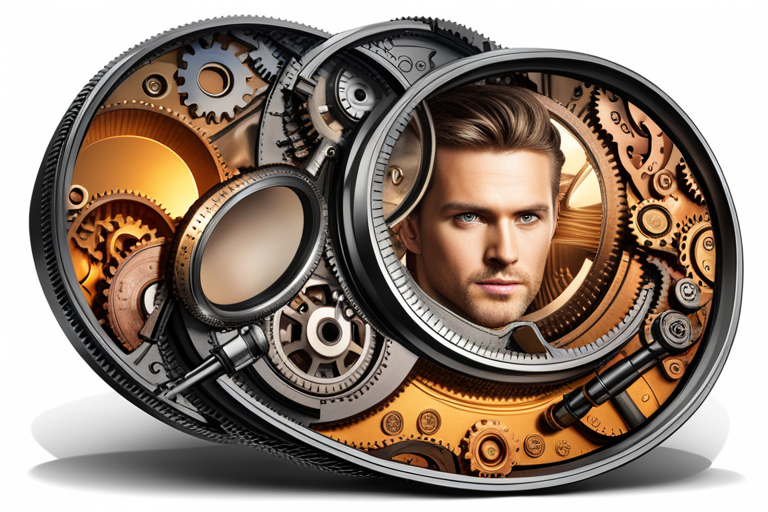Do you ever feel like your laptop is not performing as well as it could be? Maybe it’s running slow or taking forever to load programs. Before you go out and buy a new laptop, there are some hidden settings you may not know about that can help improve your laptop’s performance.
One way to improve your laptop’s performance is to adjust its power settings. By default, laptops are set to balance power usage and performance, but you can change the settings to prioritize performance.
You can also uninstall unused programs and apps that may be taking up valuable resources, as well as disable background processes that are running in the background and slowing down your laptop. By taking these steps, you can improve your laptop’s performance without having to spend any money.
Adjusting Power Settings for Better Performance
Want to boost your laptop’s performance? Start by adjusting the power settings! By default, laptops are set to balance the power usage between performance and battery life. This means that your laptop may not be performing at its full potential.
However, you can change this by adjusting the power settings to prioritize performance. To adjust the power settings, go to the Control Panel and click on Power Options. From there, you can choose between different power plans such as High Performance, Balanced, or Power Saver.
High Performance mode will prioritize performance over battery life, while Power Saver will do the opposite. Choosing the Balanced option will give you a balance between the two. By switching to High Performance mode, you can experience faster processing speeds and better overall performance.
Uninstalling Unused Programs and Apps
By removing any unused programs or apps, you can free up valuable storage space on your device and potentially improve its overall speed and efficiency. Many laptops come with pre-installed software that you may never use, and these programs may be taking up valuable storage space and slowing down your device.
Take some time to go through your list of installed programs and uninstall any that you don’t use or need. Additionally, it’s important to regularly check for and remove any apps that you may have installed but no longer use. These apps can also take up valuable storage space and potentially slow down your device.
By regularly cleaning out your device and removing any unused programs or apps, you can free up space and optimize your laptop’s performance.
Disabling Background Processes
Sometimes, disabling background processes can make your laptop run smoother and faster. Background processes are programs that run in the background without your knowledge, and they can slow down your system by using up valuable resources. Some examples of background processes include automatic updates, system backups, and antivirus scans.
To disable background processes, you can use the Task Manager on your laptop. Simply right-click on the taskbar and select Task Manager. From there, you can identify the processes that are using the most resources and disable them if they’re not essential. This will free up resources and make your laptop run faster.
Just be careful not to disable any processes that are necessary for your system to run properly.
Cleaning Up Your Hard Drive
Clearing out your hard drive can speed up your laptop’s performance and make it run more efficiently. When your hard drive is full, your laptop has to work harder to access the files it needs, slowing down its performance.
By deleting files you no longer need or transferring them to an external storage device, you can free up space on your hard drive and improve your laptop’s performance.
To clean up your hard drive, start by uninstalling programs you no longer use. These programs take up valuable space and can slow down your laptop even if you’re not actively using them.
You can also use a disk cleanup tool to get rid of temporary files, downloaded program files, and other unnecessary files.
By regularly cleaning up your hard drive, you can keep your laptop running smoothly and avoid the frustration of a slow and sluggish machine.
Updating Drivers and Software
Updating drivers and software can help keep your laptop running smoothly and efficiently. Drivers are software programs that allow your laptop to communicate with hardware devices such as printers, scanners, and graphics cards. Without the latest drivers, these devices may not work as efficiently as they should, leading to slow performance and other issues.
To update your drivers, you can go to the manufacturer’s website and download the latest version for your specific device. Software updates should also be regularly checked and installed. These updates often include bug fixes and performance improvements that can make a big difference in your laptop’s overall speed and performance.
By taking the time to update your drivers and software, you can ensure that your laptop is running at its best and avoid frustrating issues such as slow startup times and crashes.
Using System Maintenance Tools
Utilizing system maintenance tools can assist in optimizing your laptop’s functionality and prolonging its lifespan. These tools can help remove unnecessary files, clear out temporary files, and fix errors in the system registry.
One such tool is Disk Cleanup, which can delete temporary files, system files, and other unnecessary files that take up space on your hard drive. Another tool is Disk Defragmenter, which can organize files on your hard drive to improve performance.
In addition to these tools, your laptop may have built-in diagnostic and troubleshooting tools that can help identify and fix issues with the system. For example, Windows has a built-in tool called Performance Monitor that can track system performance and identify potential issues.
It’s important to regularly use these tools to ensure your laptop is running at its best and to prevent potential problems from arising. By taking the time to perform system maintenance, you can improve your laptop’s performance and prolong its lifespan.
Overclocking Your Laptop’s CPU and GPU
Did you know that you can boost your laptop’s processing power and improve its ability to handle demanding tasks by overclocking its CPU and GPU? Overclocking involves adjusting the clock speed of your processor to run at higher speeds than its default setting. This can result in faster processing times, quicker load times, and improved overall performance. However, it’s important to note that overclocking can also lead to overheating and reduced lifespan of your components, so you should do it with caution and only if you’re comfortable with the process.
To overclock your laptop’s CPU and GPU, you’ll need to access its BIOS settings. This can typically be done by pressing a key (such as F2 or Delete) during startup. Once you’re in the BIOS, locate the settings for CPU and GPU clock speeds and adjust them gradually. It’s important to monitor your laptop’s temperature to ensure it doesn’t get too hot. You can also use third-party software to help with the overclocking process, but be sure to research and choose a reputable program.
By overclocking your laptop’s CPU and GPU, you can give it a performance boost and improve its ability to handle demanding tasks.
Frequently Asked Questions
Can I improve my laptop’s performance by upgrading its hardware?
Yes, upgrading laptop hardware like RAM and storage can improve performance. However, it’s important to check compatibility and installation requirements before making any changes.
How do I know which programs and apps are safe to uninstall?
To know which programs and apps are safe to uninstall, check if they are essential for the operating system or hardware. Research the program and consult trusted sources before making any changes.
Is it safe to disable all background processes?
It’s not necessarily safe to disable all background processes as some are necessary for your laptop’s functionality. It’s best to research which ones are safe to disable and consult with a professional if unsure.
How often should I clean up my hard drive?
You should clean up your hard drive regularly to improve your laptop’s performance. Aim to do it every few months or whenever you start to notice your computer slowing down.
What are the risks of overclocking my laptop’s CPU and GPU?
Overclocking your laptop’s CPU and GPU can increase performance, but it also risks overheating and damaging your hardware. It may also void your warranty. Only attempt if you have proper knowledge and cooling.
Conclusion
Congratulations on taking the initiative to improve your laptop’s performance! By adjusting power settings, uninstalling unused programs, disabling background processes, cleaning up your hard drive, updating drivers and software, using system maintenance tools, and even overclocking your CPU and GPU, you can significantly enhance your laptop’s speed and efficiency.
Remember, taking care of your laptop is an ongoing process, so make it a habit to regularly assess and optimize its performance.
With these hidden settings and tips, you can maximize your laptop’s potential and ensure that it runs smoothly for all your digital needs.
Happy computing!

Hey there, tech enthusiasts! I’m your go-to content writer, delving into the fascinating world of technology hacks. Get ready to unlock mind-blowing secrets and discover innovative solutions through my engaging and insightful blogs.


